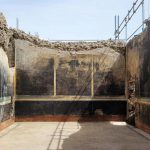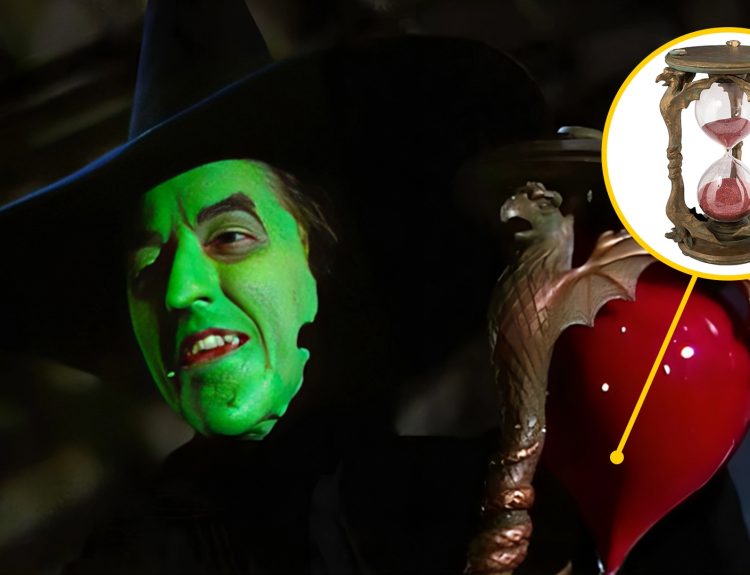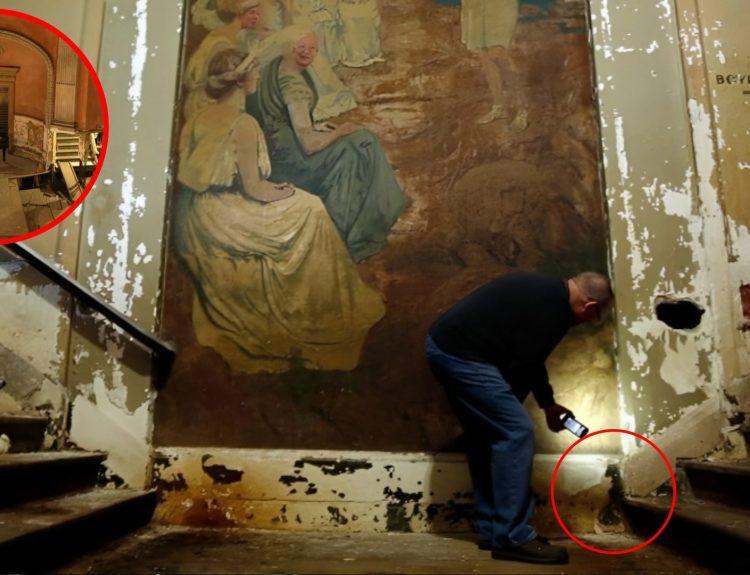Bostonians strolling along Boylston Street these days are probably totally unaware that a mere 40 feet below their shoes lies a stunningly beautiful, ornate concert hall that was once the talk of the town. The concert hall was intentionally constructed deep underground … it hadn’t sunk beneath the concrete jungle like an East Coast Atlantis, nor was it the work of an opera-loving phantom in the Parisian catacombs.
Although this entertainment venue has been long forgotten in its abandoned subterranean hole, Steinert Hall was, in its day, one of the premier performance spaces in all of Boston. Steinert Hall is a well-hidden, well-preserved relic of the past that few people living today have ever laid eyes on.
A Music Store with a Twist
Before Steinert Hall there was M.S. Steinert & Sons. This was a piano store that was established in Boston in 1860 by Morris Steinert, a Bavarian immigrant, who had been processed through Ellis Island just ten years before. A shining example of the American Dream, Steinert had an entrepreneurial spirit and a strong work ethic that helped him open a successful business.

Morris Steinert passed his business sense on to his sons. After all, they were an integral part of the music store, as the name suggested. Morris’s second born son, Alexander, led the company’s growth efforts. That included an audacious move to a larger location and an even more unconventional side business.
The Steinerts and Steinways
Morris Steinert and his sons wanted to offer top-notch musical instruments in their store. When it came to pianos, there was no product better than the similarly named Steinway & Sons piano manufacturing company of New York. Three times, Morris Steinert visited the Steinway & Sons headquarters in New York. Three times, he was turned away.

Morris Steinert was not a man to give up easily. He planned a fourth meeting with Steinway & Sons. This time, Morris brought along his wife, who was, like him, a skilled musician. She was able to charm the decision-makers at the prestigious piano manufacturer. On September 14, 1869, Morris Steinert was granted a contract to be a Steinway dealer.
The Store on Boylston Street
Under Alexander Steinert’s direction, the M.S. Steinert & Sons piano store acquired a piece of land on Boston’s Boylston Street. Alexander drew up his ideas and consulted with architects. Soon, a limestone and brick storefront towering six stories tall was erected on Boylston Street.
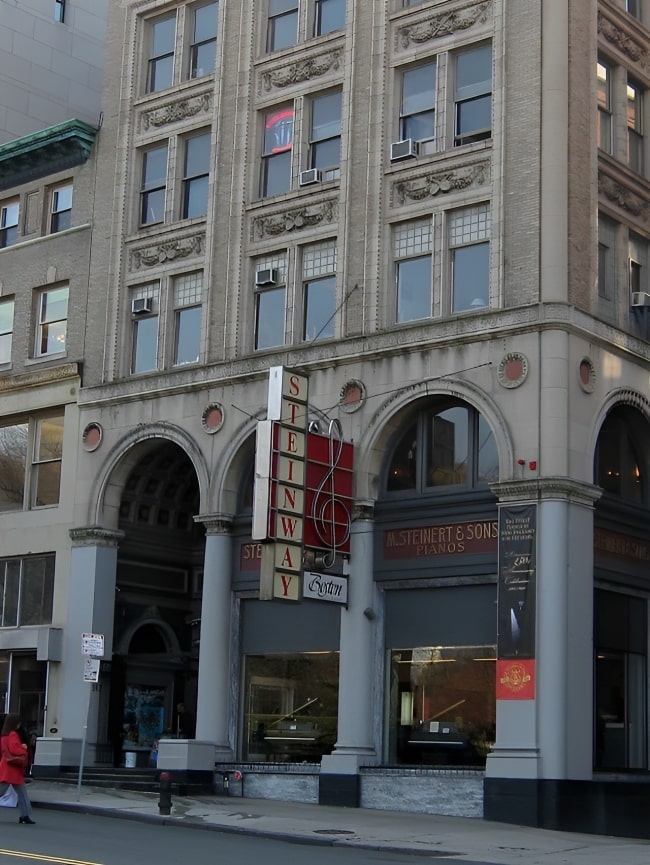
The M.S. Steinert & Sons piano company moved into its new home at 162 Boylston Street. The store opened its doors to the public on December 16, 1896. Amazingly, the company is still in business today … 163 after Morris Steinert founded the store and 127 years since it opened its Boylston Street store.
A Mecca for Boston’s Top Musicians
The Steinway quality and the Steinert reputation attracted many of Boston’s elite musicians to the piano store. On any given day, some of the most popular musical performers of the time could be found in the Steinert’s store. Soon, it was a Mecca for pianists.

This gave Alexander Steinert an idea. If he could provide a venue at M.S. Steinert & Sons, he believed he could get these performers to give concerts for paying guests at the Boylston Street location. But Alexander needed to find the ideal place to build a concert hall.
Building Steinert Hall
At first, Alexander Steinert thought of turning the upper floor of the music store into a concert venue, but this proved to be problematic. The noise from the busy street below was almost constant. It would detract from the beautiful music being played.

If he couldn’t build his concert hall above his father’s music store, Alexander Steinert was forced to look for a different location. By going underground, deep below the streets, the stage would be much quieter and free of distractions.
A Spacious and Ornate Venue
Alexander Steinert supervised the construction of the underground concert hall several floors beneath the music store. Designed in the Italian Renaissance style, Steinert Hall, as it was called, was large enough to seat 650 guests in an impressive and lavish facility.

Four stories below street level, Steinert Hall not only insulated the musical performers from the cacophony of the street, but it was an acoustic marvel. The hall was so well designed that the stage’s acoustics amplified the music and enhanced the concert experience.
An Unassuming Entrance
Getting to Steinert Hall was reminiscent of arriving at a Prohibition-era speakeasy, only the music venue opened two dozen years before the start of Prohibition. Guests, dresses in their finest evening attire, had to first go to M.S. Steinert & Sons on Boylston Street.
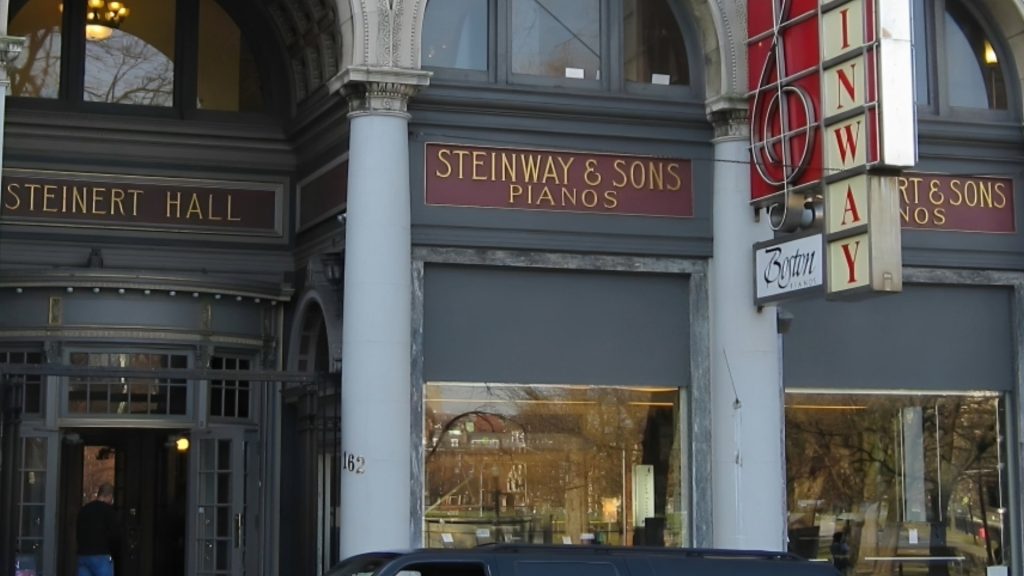
Next, they had to go through an unassuming door and climb down four flights of stairs. When they finally arrived at Steinert Hall, they were awed by the stately beauty of the performance venue. The Steinert family had spared no expense in making this space worthy of the elite musicians who would play there.
A Masterfully Designed Stage Deep Underground
Musicians and guests alike stared in wonder at Steinert Hall. Who could imagine such splendor in the bowels of Boston? With its classic columns, ornate arches, and intricate fluted pilasters, the secluded venue rivals the grandest concert halls of Europe.
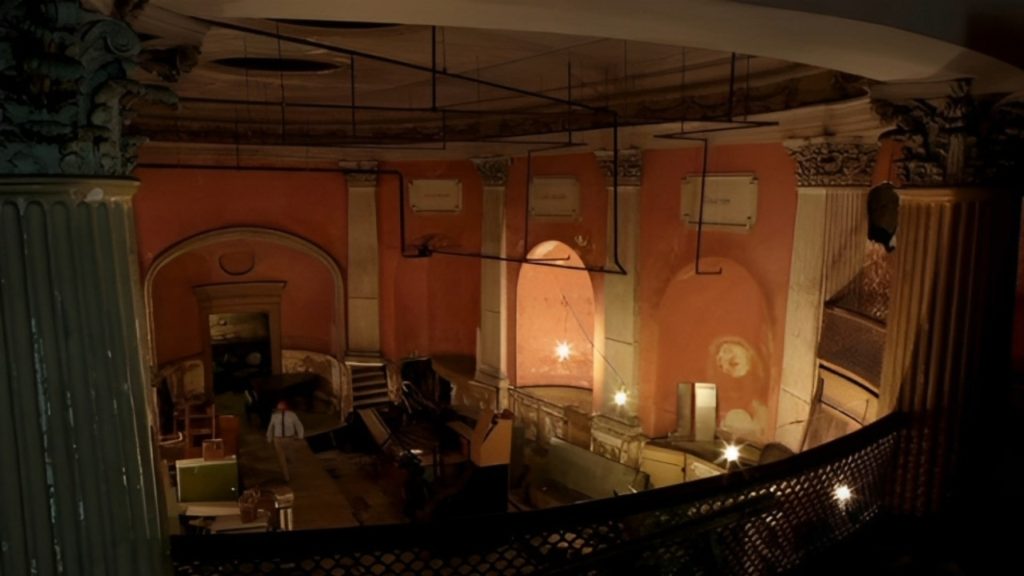
Guests admired the delicate details of the frescos and marveled at the Adam-style design. It must have taken a tremendous amount of manpower to bring the building materials down four flights of stairs and carve out an old-world concert hall in the underbelly of the city.
The Cultural Center of Boston
Alexander Steinert was eager to show off the brand-new Steinert Hall to his musician friends who frequented the M.S. Steinert & Sons music store. By this point, Boylston Street and the surrounding neighborhood had developed into a vibrant entertainment and theater district, nicknamed “Piano Row.”
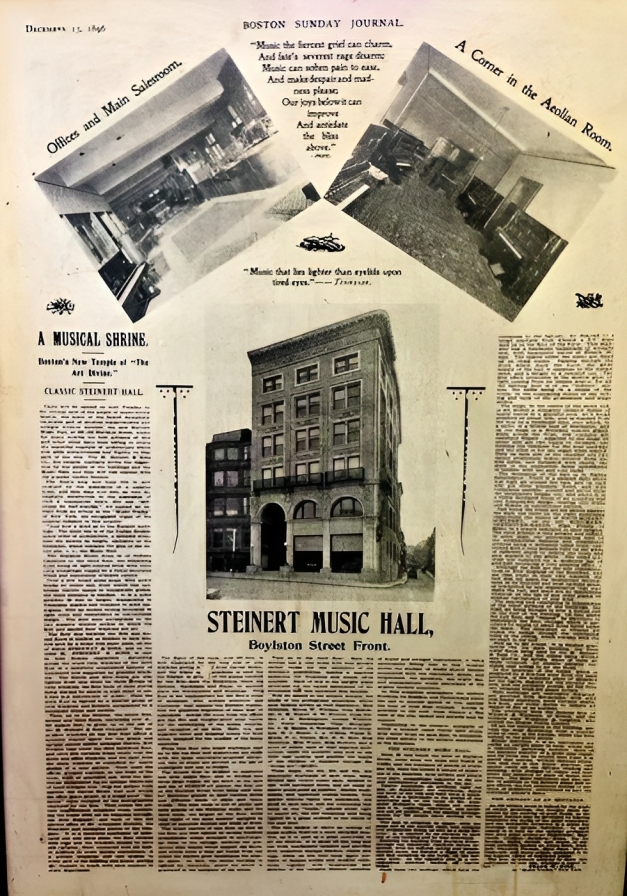
Not long after its completion in 1896, Steinert Hall was hosting some of the city’s best musicians. By the early 1910s, it was called the center of the “musical and artistic world of cultured Boston.” Guests attending concerts in the subterranean venue had to walk through the music store first …. a clever marketing ploy on the part of Alexander Steinert!
Boston’s Best Performers … Underground
The list of musicians who graced the stage of Steinert Hall reads like a Who’s Who of Boston’s turn-of-the-century greats. Harold Bauer, Josef Hofmann, Anna Diller Starbuck, Fritz Kreisler, Lhevinne, and countless more entertained the packed house of the underground venue.

The performers who played at Steinert Hall raved about the acoustics of the unique facility. So deep under the earth, the musicians didn’t have to deal with ambient noise. Plus the hall was constructed using state-of-the-art sound technology. Every seat offered a tremendous view and great sound quality.
Built to Last
Steinert Hall was built to last. Alexander Steinert envisioned the venue as a place that would be a focal point in the city for generations to come. Indeed, for nearly half a century, Steinert Hall was just that … a focal point of Boston’s thriving music scene.

But an unexpected tragedy brought it all to an end. No, the city block did not crash into Steinert Hall. The architects of the hall made sure that would never happen. So, what terrible event caused Steinert Hall to close its doors for good?
A Horrific Incident
The horrific incident that marked the end of Steinert Hall actually took place several blocks away from the M.S. Steinert & Sons music store on Boylston Street. It occurred at 17 Piedmont Street. That was the location of the most popular Boston dance club of the 1930s and 1940s … the Cocoanut Grove.
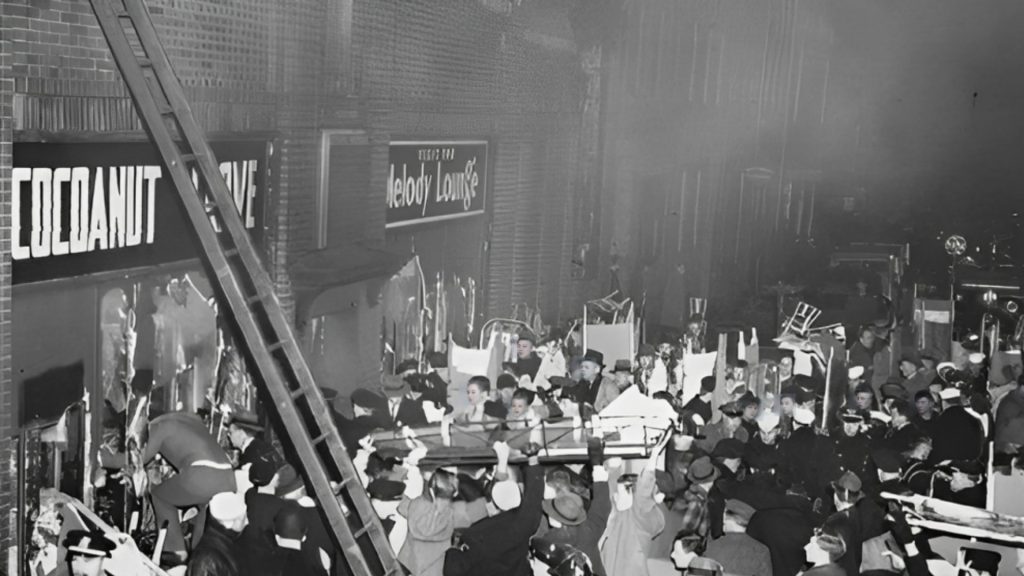
As it was on most Saturday nights, the Cocoanut Grove was packed with hundreds of patrons on the evening of November 28, 1942, when a fire broke out. The people inside panicked and rushed toward the building’s only door as the flames swept quickly through the building. When the ashes cooled, 492 people were dead … most of them were found in a massive pile by the door. They died as they tried frantically to push through the bottleneck of people.
Public Outcry and New Safety Changes
In the wake of the Cocoanut Grove fire of 1942, the people of Boston mourned for the loss of their fellow citizens, but were also critical of the layout of the nightclub. The tragedy, they believed, could have been prevented if the building had multiple exits and fire escapes.

As a result, the city of Boston made significant changes to its building codes, especially for public venues that could accommodate large crowds of people. All of these venues were required to have several working exits and fire escapes to facilitate the rapid evacuation of people in the event of a fire. For Steinert Hall, this posed a problem.
Not Up to Code
Steinert Hall was built four stories underground with only one set of stairs leading into and out of the venue. Its unique location was also limiting. It was virtually impossible to add more entryways and stairs to the concert hall.
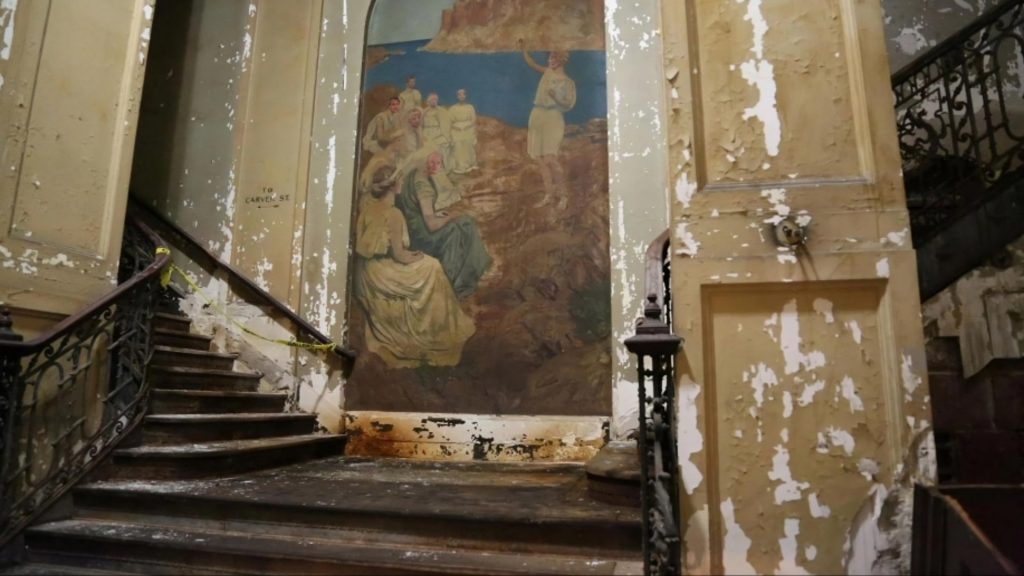
Steinert Hall was not up to code. The city of Boston had no choice but to order the Steinert family to close the doors of the venerated performance center. It was for the safety of the performers and audience members. The stage went dark at Steinert Hall in 1942.
A Dusty Storeroom
The next generation of Steinerts to run the M.S. Steinert & Sons music store still had access to the concert hall deep beneath their building, but for most Bostonians, Steinert Hall became a distant memory. It was used as a dusty storeroom for nearly 90 years.
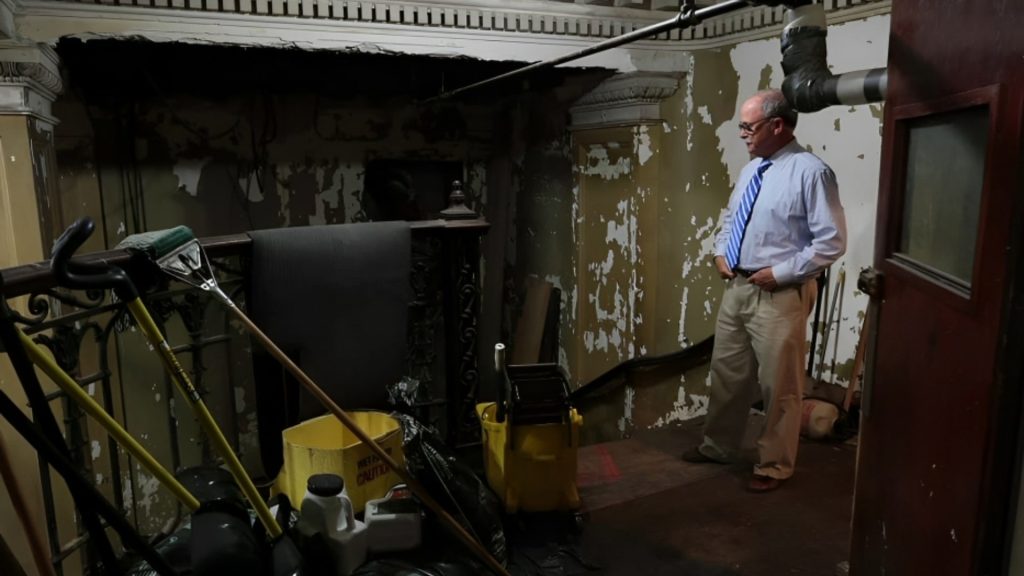
A blogger named Greig Lamont who writes a blog called “A Project in Ruins” featuring dilapidated yet historical buildings of the past. He heard about Steinert Hall and began to research this subterranean auditorium. Would the concert hall still be there after decades have passed?
Steinert Hall … Still Standing Strong
Thanks to the efforts of Greig Lamont, he was able to confirm that Steinert Hall is still standing strong after years of neglect, right where it has always been … four stories under the M.S. Steinert & Sons music store. Lamont was granted permission to visit the old venue.
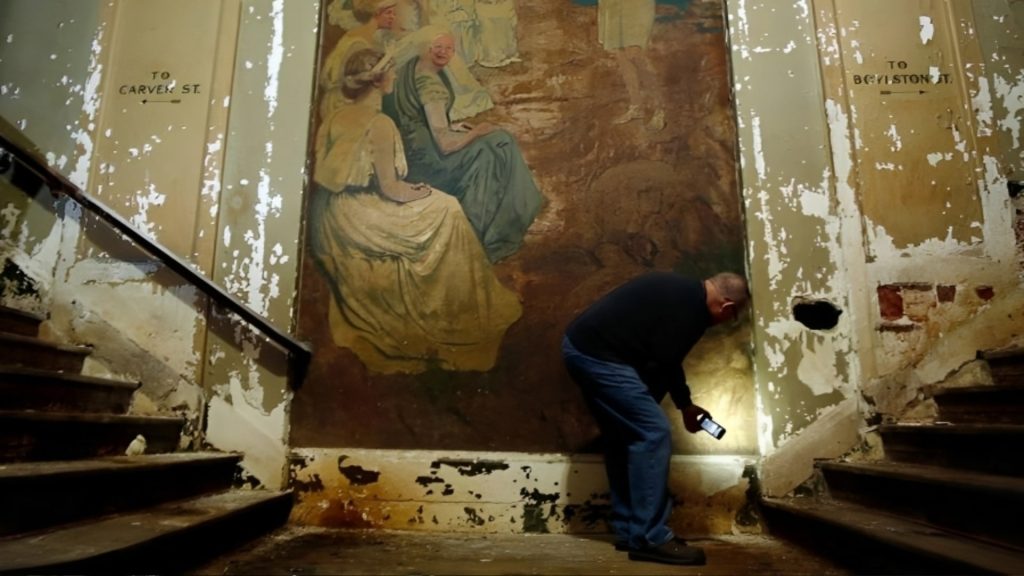
Alexander Steinert built the venue to stand the test of time and it seems that Steinert Hal passed the test with flying colors. Well, maybe not “flying colors”. There was widespread water damage throughout the hall. Dust and spider webs filled the place. And nearly all of the seats were gone … they had been donated to a local high school years before.
Time Did Not Diminish the Sound Quality
The stately columns and elegant details of Steinert Hall remain intact. They just need a good cleaning. Amazingly, the acoustic sound quality that made the stage so popular among musicians has not been impacted by the ravages of time. Sound still beautifully resonates throughout the venue.
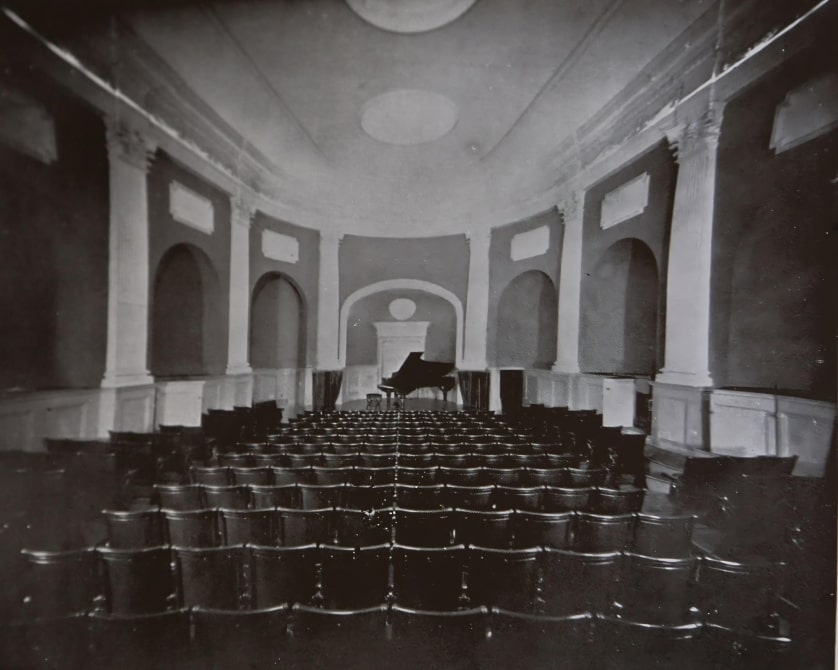
As Lamont spread the word about the long-forgotten, subterranean auditorium in the heart of Boston, public interest in this unusual and historic place surged. In fact, the public pushed for Steinert Hall to be renovated and reopened. Plans are currently underway to raise the more than $6 million needed to clean and restore the venue and, more importantly, bring it up to current building codes. As money pours in, there is hope that Boston’s underground treasure will once again hear the majestic music of Bostonian artists.


